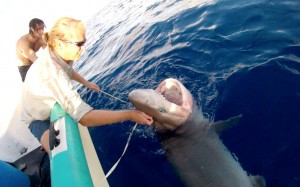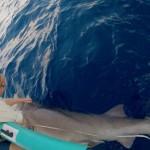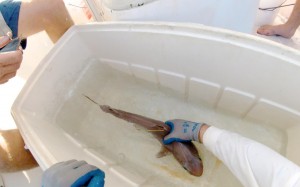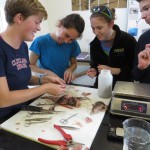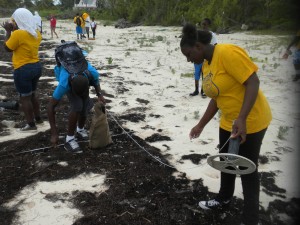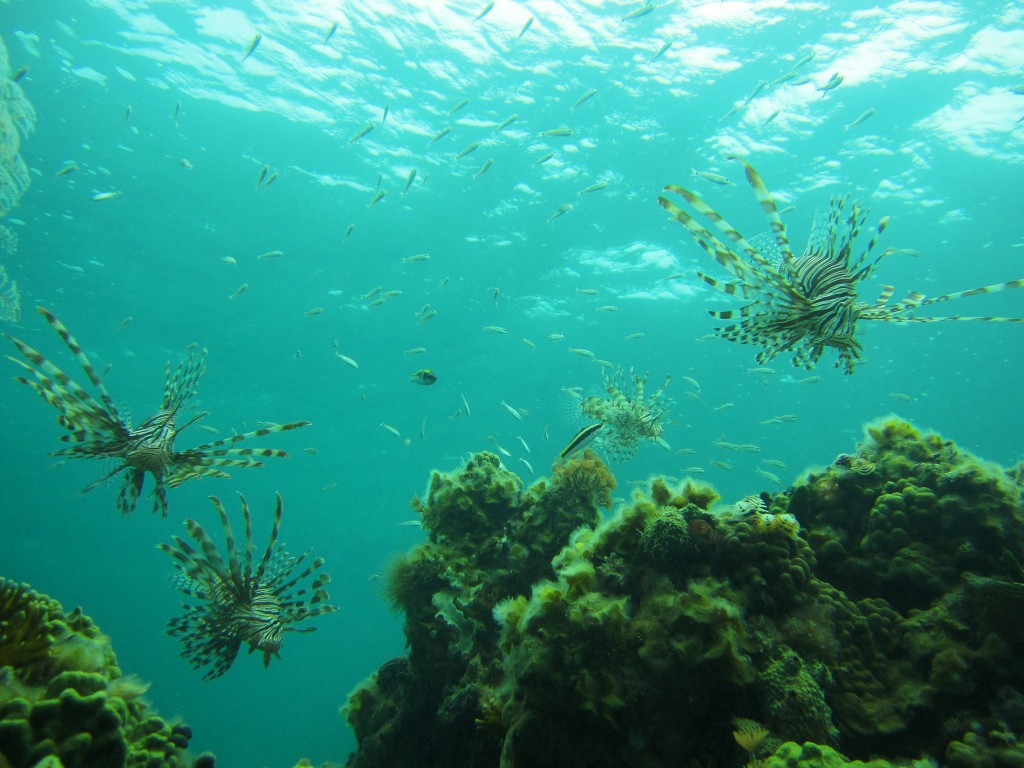This week, the RSMAS group had a class on invasive species. As part of the class, team RSMAS got to go out with the lionfish researchers and help with spearing, dissecting, and filleting of fish.

Megan Gleason said, “The spears were easy to use, and the lionfish were abundant. We got 14 of them!” Team RSMAS had the opportunity to dive and spear in an uncharted spot which was great.
It was alarming to see the amount of lionfish on a reef that had not been monitored, but it was also a cool experience having so many potential targets to spear!
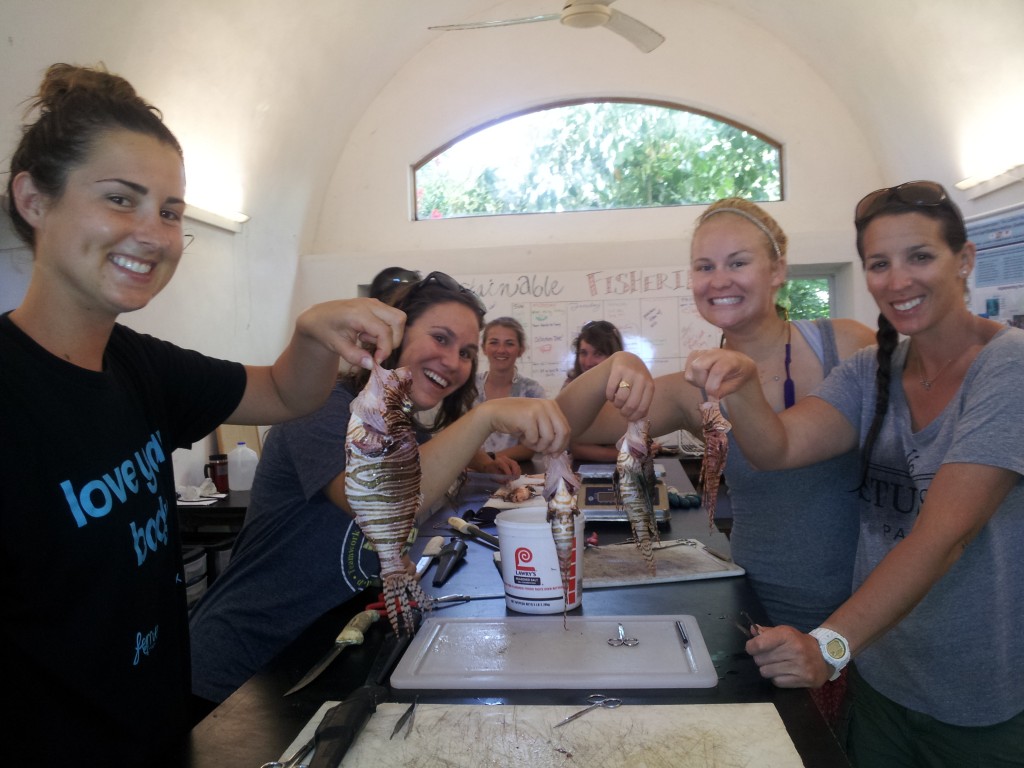
They got back to campus and began to dissect the fish in order to see what they had been eating. There were some baby crabs and shrimp in their stomachs; it was incredible that we were able to see them in their whole form. Then it was time to fillet the fish. Afterwards, the group reflected, “We are all looking forward to eating them and experimenting with ways they can be prepared. The cookbook we had the chance to look through gave us some good ideas.”

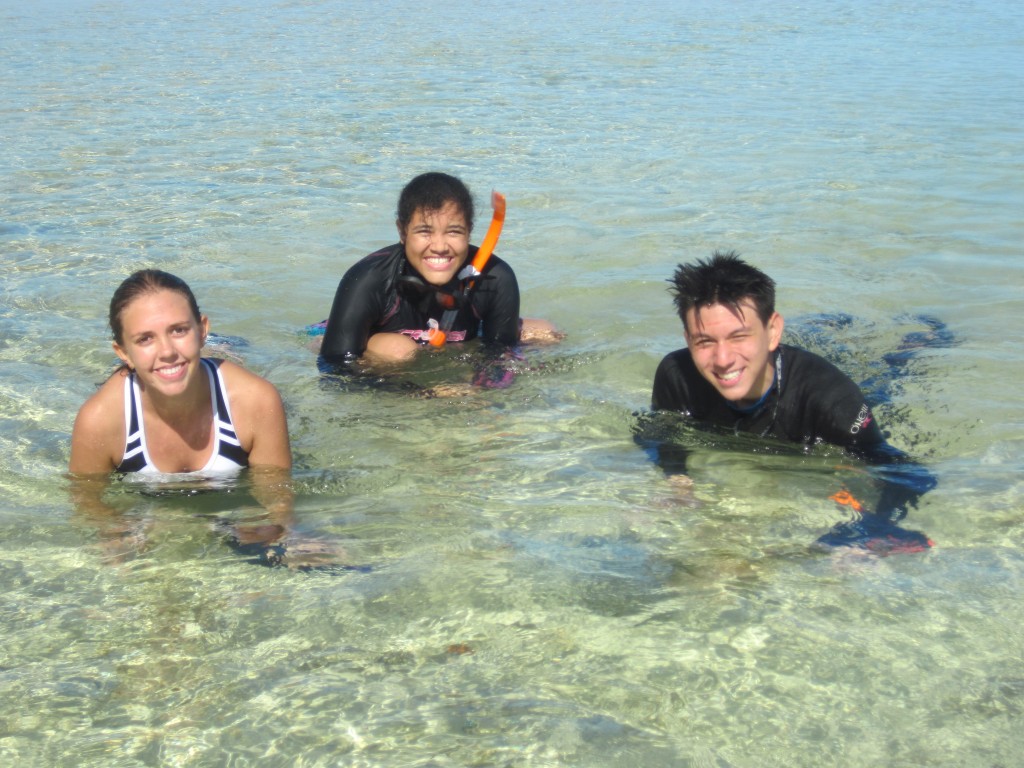
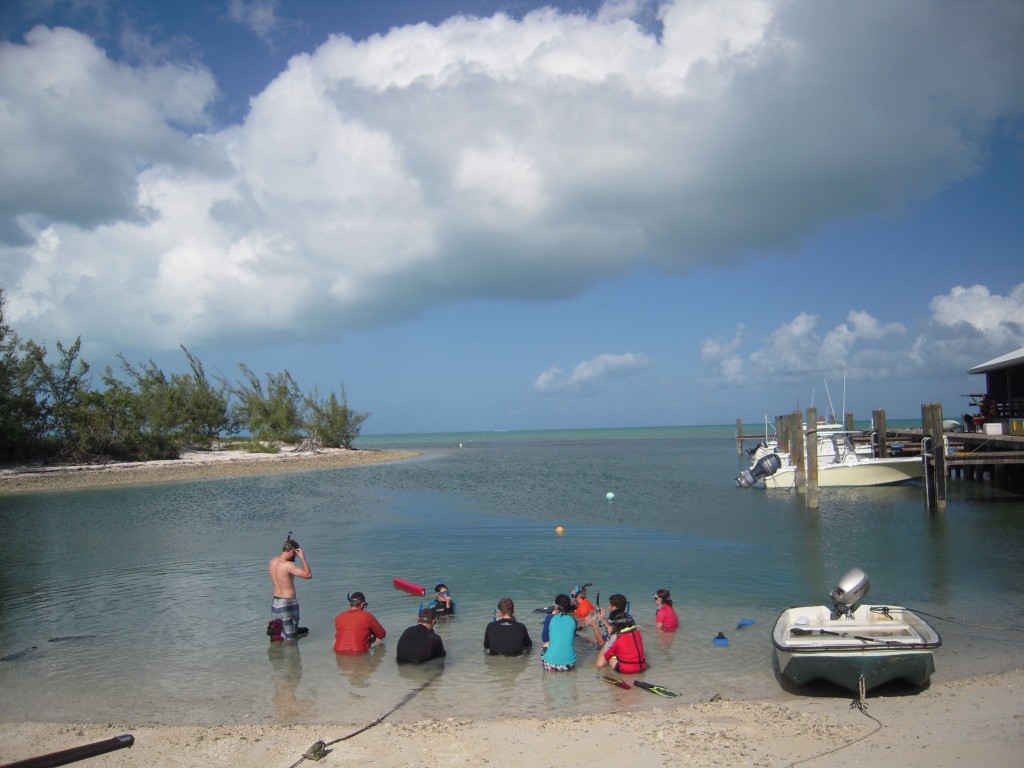


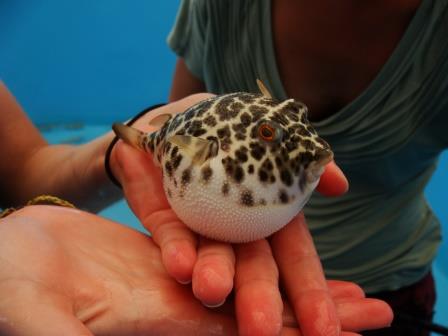 Naomi and her team from Carleton and CEI collected puffers from Page Creek and tested their behavior before, during, and after treating them with a stress hormone, cortisol. Behaviors tested included puffing, activity, and fright response. The puffers were returned to Page Creek and will be caught again in the few days to be sampled in order to measure the activity of their immune systems. With these results, the team will be able to determine how personality differs between puffers and how this personality, as well as immune function, is influenced by an increase in cortisol levels.
Naomi and her team from Carleton and CEI collected puffers from Page Creek and tested their behavior before, during, and after treating them with a stress hormone, cortisol. Behaviors tested included puffing, activity, and fright response. The puffers were returned to Page Creek and will be caught again in the few days to be sampled in order to measure the activity of their immune systems. With these results, the team will be able to determine how personality differs between puffers and how this personality, as well as immune function, is influenced by an increase in cortisol levels.